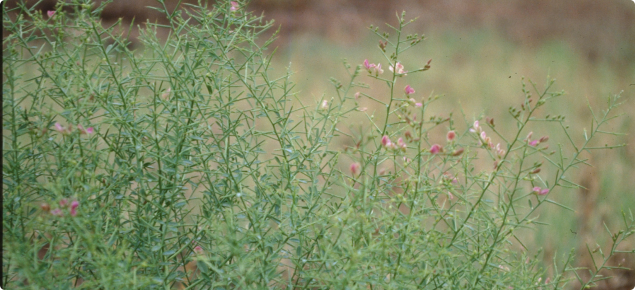Information about this pest can be found on the camelthorn: declared pest page.
Chemical requirements
When using any agricultural chemicals please ensure that you always follow instructions on the label and any permit. Users of agricultural chemical products must always strictly comply with the directions on the label and the conditions of any permit. To view permits or product labels go to the Australian Pesticides and Veterinary Medicines Authority website.
Chemical control options
Chemical control options can be found below. For other methods of control please refer to the aquatic weed control page, and the declared plant control handbook.
Recommended herbicides | When actively growing:
|
| Herbicide: Picloram + triclopyr (Group I) (various trade names: see APVMA link) | |
| Active ingredient | 100g/L picloram + 300g/L triclopyr |
| Rate of dilution for spot spraying | 1:100 |
| Rate of product/10L water | 100mL |
| Rate of product/ha | Not recommended |
| Time of application | When actively growing |
| Remarks |
|
| Herbicide: Picloram + 2,4-D amine (Group I) (various trade names: see APVMA link) | |
| Active ingredient | 75g/L picloram + 300g/L 2,4-D |
| Rate of dilution for spot spraying | 1:75 |
| Rate of product/10L water | 150mL |
| Rate of product/ha | Not recommended |
| Time of application | When actively growing |
| Remarks |
|

